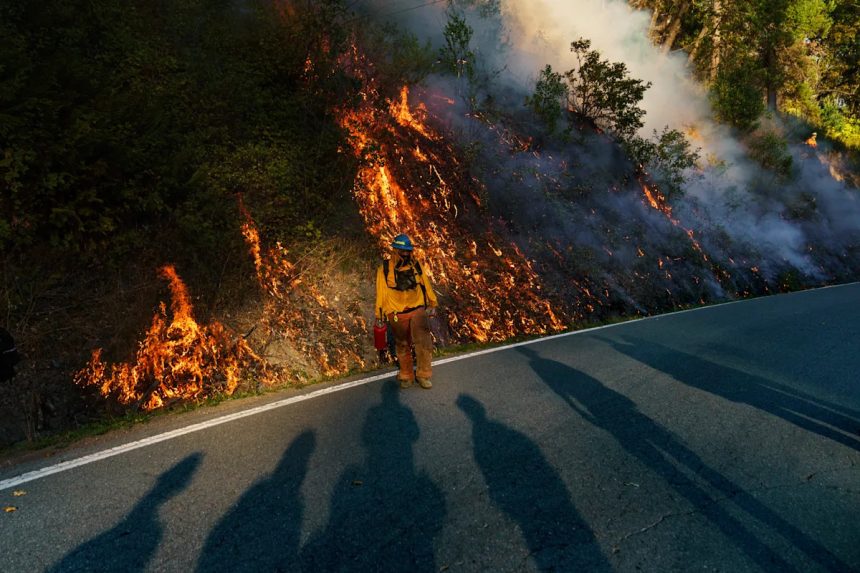SACRAMENTO, California — Good news for California wildfire watchers: Rain is in the forecast for as early as Monday night in Northern California. Bad news for wildfires: The federal government is nearing a shutdown.
In case Congress can’t come to an agreement to fund the federal government past Tuesday night, federal agencies including those that oversee wildland fighting like the Department of Agriculture are drawing up plans not just to temporarily furlough employees, but also to permanently lay off more federal workers.
Active firefighters are typically exempt from furloughs — but forest managers, who are responsible for fire prevention projects, aren’t. The looming shutdown is threatening the tail end of what’s actually been a decent fire year in terms of the number of acres burned — if not a good year for property damage, given the Los Angeles wildfires in January.
The impacts in California could be far-ranging, given that the federal government owns and manages 57 percent of the forested land in the state. (The Forest Service didn’t respond to a request for comment.)
Cal Fire spokesperson Nick Schuler said Monday that California firefighters “will continue to operate as normal, and do not anticipate a potential shutdown to have an impact on our ability to protect the state responsibility areas of California.” He also highlighted the state’s “master mutual aid system” through which neighboring states and cities share resources in case of an emergency need.
If firefighters keep holding the line, they could finish out the year with only roughly half the number of acres burned as the five-year historic average. Cal Fire chief Joe Tyler, in an interview last week, attributed that success partly to new heat-sensing technology Cal Fire has on its planes, which have flown almost every day this year after entering the fleet last year.
After a record 110,000 lightning strikes hit across the state in August, those reconnaissance flights picked up small smoldering fires that wouldn’t have otherwise caught the attention of human lookouts, which firefighters were then able to put out before they grew large enough to throw up smoke and embers. Only a few of those grew into headline-making destructive fires, like the one that destroyed part of the historic town of Chinese Camp in the Sierra Nevada foothills.
Tyler is using the anecdote to push for even more funding: “The money that has been invested in resilience is amazing, and it needs to continue,” he said.
It’s a different story away from the firefighting front lines. Any disruption to federal grant funding for fire prevention and resilience “could have negative impacts,” Schuler said. James Puerini, who works with federal, state and tribal partners on prescribed burns and forest health projects as part of the nonprofit Climate and Wildfire Institute, added that the shutdown could disrupt ongoing planning, especially because the federal government hasn’t broadcast shutdown guidance broadly.
“The uncertainty makes it very hard to get work done, primarily on lands administered by the federal government,” he said.
The imminent end of government funding comes at a crucial time: Cooler temperatures and wetter weather are opening a window for land managers to safely conduct prescribed burns, which can help reduce the risk of a catastrophic wildfire. Cal Fire has controlled burns planned in Mendocino and Butte counties this week. The federal government, meanwhile, has plans to burn in Lassen National Forest, the Shasta-Trinity National Forest and in eastern San Bernardino County.
The Climate and Wildfire Institute had been preparing for its own prescribed burn in the bark beetle-ridden Sierra National Forest near Fresno, but one of the year’s largest fires, the Garnet Fire, tore through the area in August.
In a clear sign that frustration over forest health is boiling over, the fire prompted a local petition for the Forest Service to remove the local forest supervisor.
Like this content? Consider signing up for POLITICO’s California Climate newsletter.









